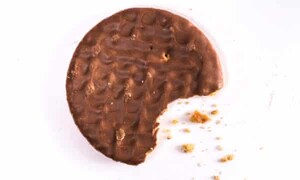A teaspoon’s worth of dark dust and granules scooped from an asteroid 200m miles from Earth has arrived at the Natural History Museum in London, where scientists are preparing to unlock its secrets.
Researchers at the museum received 100mg of the pristine material, which at 4.6bn years old dates back to the dawn of the solar system, after Nasa’s Osiris-Rex mission stopped at asteroid Bennu in 2020 and returned samples to Earth in September.
gonna be a plastic bag in it
Dang, space junk really has gotten out of control, huh?
which at 4.6bn years old dates back to the dawn of the solar system
…unlike all the other dust, which popped into existence three days ago.
From a geologic standpoint, yes the rocks in Hawaii are brand new.
Well, yeah, to some degree this was a shit take of “ackshually everything in the universe has existed in some form, at least since the Big Bang, quite possibly longer”.
But to some degree, it also just felt like a weak explanation for the excitement, because even on Earth, you can drill into some rocks and find material which has been left untouched for a similar timespan.
While Earth also formed 4.6bn years ago, its crust did not cool out right away, so it would be valid, if they’re specifically excited about this (comparatively) tiny timeframe.
But reading the actual article, it rather sounds like the more obvious excitement is, that it is simply dust from an asteroid and it hasn’t been mostly burnt up from the usual way of asteroids entering Earth’s atmosphere.Fair point, I think the fact that this is wholly extraterrestrial is cooler than the age
Damnit, for a moment I got all excited, like, "Oh, dark dust like dark matter and dark energy, that sounds fascinating, I must learn more … abou- … oh. Yeah, nevermind … "
This is the best summary I could come up with:
A teaspoon’s worth of dark dust and granules scooped from an asteroid 200m miles from Earth has arrived at the Natural History Museum in London, where scientists are preparing to unlock its secrets.
Researchers at the museum received 100mg of the pristine material, which at 4.6bn years old dates back to the dawn of the solar system, after Nasa’s Osiris-Rex mission stopped at asteroid Bennu in 2020 and returned samples to Earth in September.
The spacecraft briefly touched down on Bennu, an asteroid that has a 1-in-1,750 chance of colliding with Earth in the next 300 years, and gathered more than 60g of untouched material, the largest amount brought back from space since the Apollo program.
Scientists expect to study the samples for decades as they seek to understand how the solar system formed and whether asteroids delivered substantial amounts of water to Earth and other planets.
The first two years of research at the Natural History Museum will focus on non-destructive tests, such as X-ray diffraction and electron microscopy to learn about Bennu’s mineral composition and structure.
The museum is home to one of the world’s leading meteorite collections, and the staff are well-used to handling small amounts of extremely precious materials from outer space.
The original article contains 498 words, the summary contains 206 words. Saved 59%. I’m a bot and I’m open source!
They should have a look in the corner of our junk room, there’s older dust than that there.
It’s space cocaine
Keep it away from Westminster then.
“What space dust? *sniff I haven’t seen anything.”I wouldn’t be surprised it somebody did snort a bit. They could be the only person ever to have snorted an asteroid which hasn’t naturally entered the atmosphere but was collected by an automated robot.







